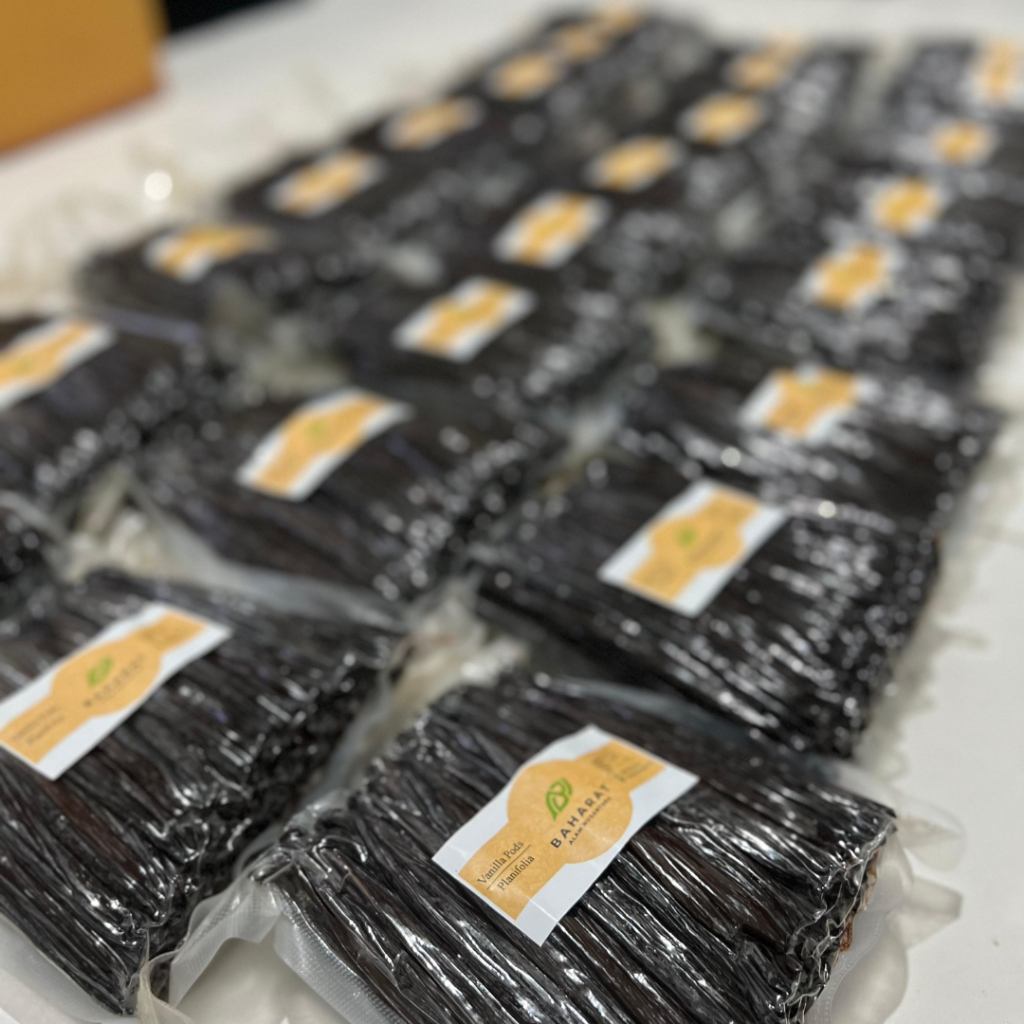 Indonesia has emerged as one of the world’s leading vanilla producers, with its rich biodiversity and fertile soil providing an ideal environment for vanilla cultivation. As the global appetite for natural vanilla continues to grow, the vanilla trade in Indonesia is becoming increasingly significant. However, the journey from a delicate vanilla orchid to a premium export product is far from simple. It involves a sophisticated chain of processes that includes cultivation, harvesting, logistics, storage, and transportation. Understanding this journey is essential for stakeholders seeking to appreciate the value and potential of Indonesia’s vanilla industry.
Indonesia has emerged as one of the world’s leading vanilla producers, with its rich biodiversity and fertile soil providing an ideal environment for vanilla cultivation. As the global appetite for natural vanilla continues to grow, the vanilla trade in Indonesia is becoming increasingly significant. However, the journey from a delicate vanilla orchid to a premium export product is far from simple. It involves a sophisticated chain of processes that includes cultivation, harvesting, logistics, storage, and transportation. Understanding this journey is essential for stakeholders seeking to appreciate the value and potential of Indonesia’s vanilla industry.
Cultivation and Harvesting
Vanilla cultivation in Indonesia is deeply rooted in traditional farming practices. Most vanilla is grown by smallholder farmers in regions such as Papua, Bali, and North Sumatra. These farmers often rely on generational knowledge and hands-on experience to manage their vanilla crops. Vanilla orchids require meticulous care; they must be hand-pollinated, and the vines need structured support and consistent maintenance.
Harvesting occurs when the vanilla pods reach full maturity, typically nine months after pollination. Timing is critical. Harvesting too early can result in low vanillin content, while delayed harvesting may cause the pods to split, reducing their value. Farmers pick the pods individually, ensuring only ripe beans are collected. This careful attention to timing and technique reflects the high level of expertise embedded in Indonesia’s vanilla farming culture.
Processing and Quality Control
Once harvested, vanilla beans undergo an extensive curing process that develops their distinctive aroma and flavor. This involves several stages: blanching, sweating, drying, and conditioning. Each step must be carefully managed to avoid mold and preserve quality.
Processors often rely on skilled workers who understand how environmental conditions, such as humidity and sunlight, affect the curing process. Quality control is integrated throughout. Beans are sorted based on length, moisture content, and appearance. Only the finest grades qualify for export, ensuring Indonesia maintains its reputation for premium vanilla.
Vanilla Logistics: Challenges and Solutions
Moving vanilla from rural farms to urban processing centers and export facilities presents numerous logistical challenges. Farms are frequently located in remote areas with limited infrastructure. Poor road conditions and unpredictable weather can delay transport, affecting bean quality and market timelines.
To overcome these issues, some cooperatives and exporters have developed collection hubs that aggregate vanilla from nearby farms. This strategy improves efficiency and allows for quality checks before transport. Additionally, digital tools such as GPS tracking and supply chain management software are increasingly used to streamline logistics and enhance traceability.
Innovations in Vanilla Storage and Transportation
Storage plays a vital role in preserving vanilla’s delicate properties. Beans must be kept in controlled environments where temperature and humidity are monitored to prevent mold growth and flavor loss. Traditional storage methods, like wooden boxes lined with wax paper or vacuum-sealed bags, are commonly used to maintain quality.
Transportation also demands careful planning. Beans are often shipped from island to island before reaching international ports in Jakarta or Surabaya. During this journey, they must be protected from excessive heat and moisture. Some exporters use insulated containers or cold-chain logistics for high-grade vanilla, ensuring it reaches global markets in optimal condition.
Market Access and Export Dynamics
Indonesia exports vanilla primarily to markets in the United States, Europe, and Japan. Exporters must comply with international standards such as USDA Organic, Fair Trade, and HACCP certifications. These requirements emphasize food safety, ethical sourcing, and environmental sustainability.
Maintaining consistent quality and meeting documentation standards are crucial for accessing premium markets. Exporters often collaborate with agronomists, logistics experts, and international buyers to align their practices with global expectations. This collaborative approach strengthens Indonesia’s position in the competitive vanilla trade.
Conclusion
The vanilla trade in Indonesia is a multifaceted industry driven by experience, expertise, and an unwavering commitment to quality. From careful cultivation and harvesting to sophisticated logistics and international exports, every step in the process reflects Indonesia’s dedication to excellence. By investing in better infrastructure, storage solutions, and transparent supply chains, Indonesia can further elevate its status as a trusted global supplier of premium vanilla.
For those seeking ethically sourced, high-quality Indonesian vanilla, Prime Vanilla by Baharat Prime Indonesia offers a reliable and sustainable solution. With a strong commitment to transparency, quality, and farmer empowerment, Prime Vanilla is proud to represent the best of Indonesia’s vanilla to the world.


